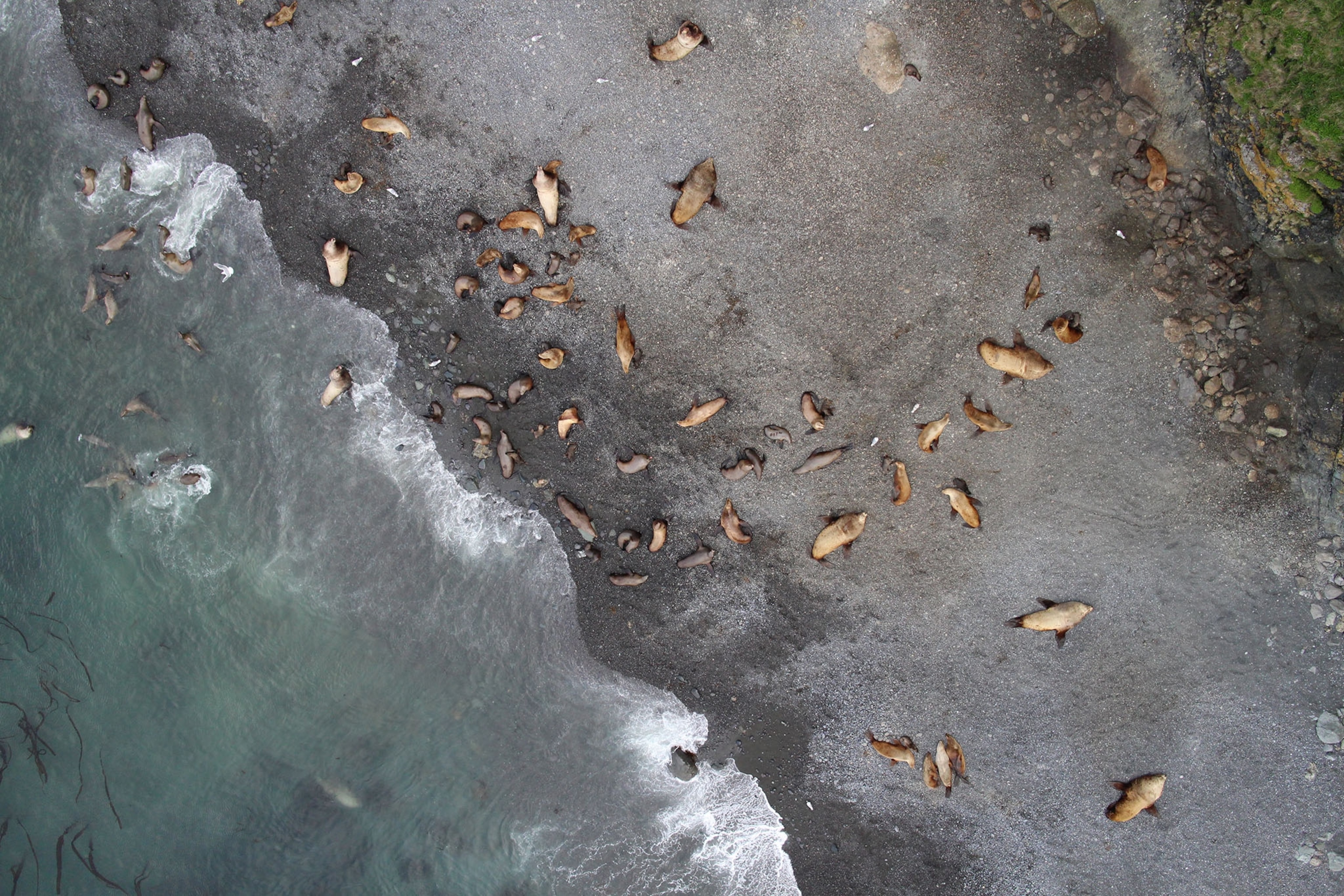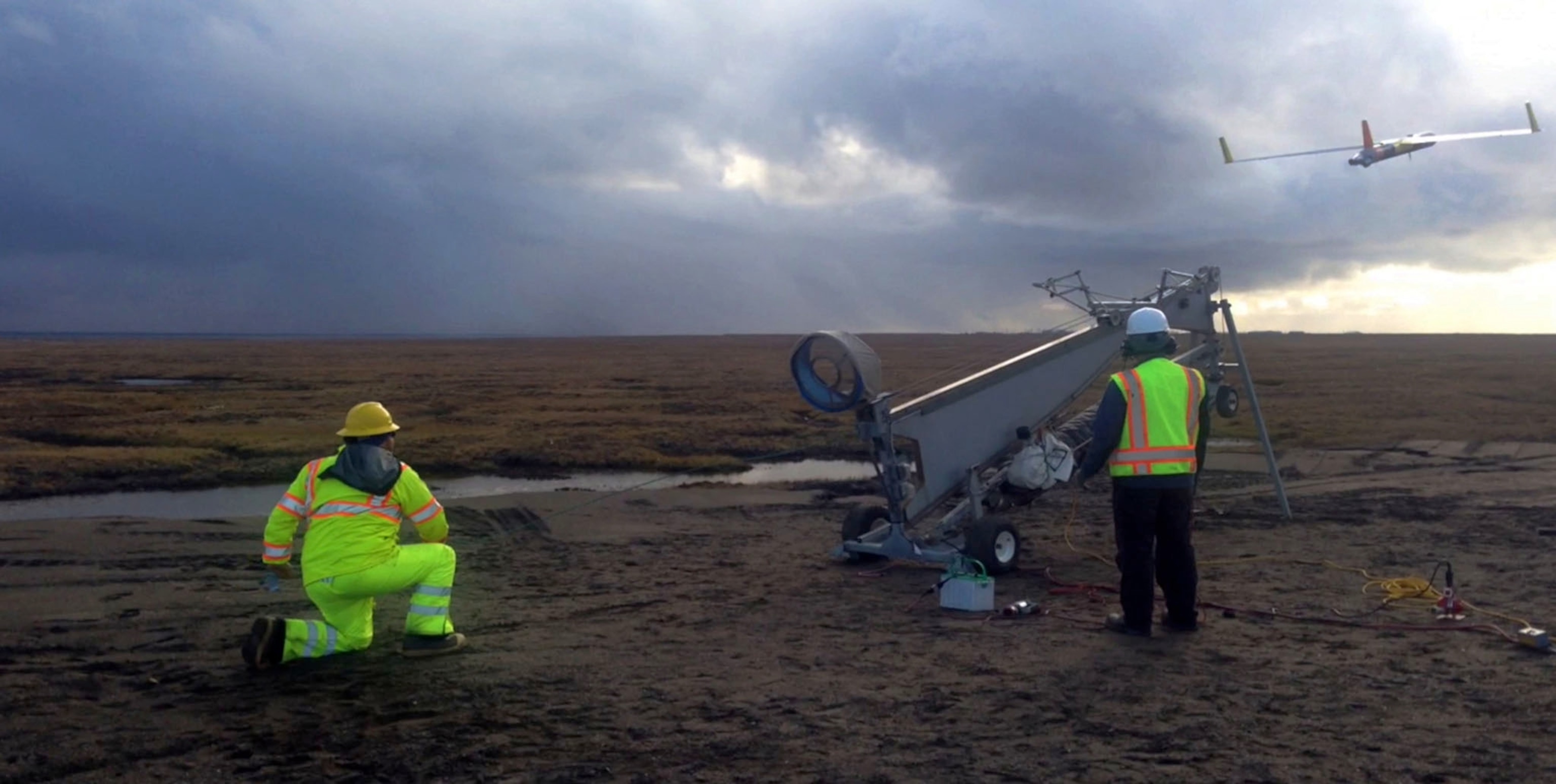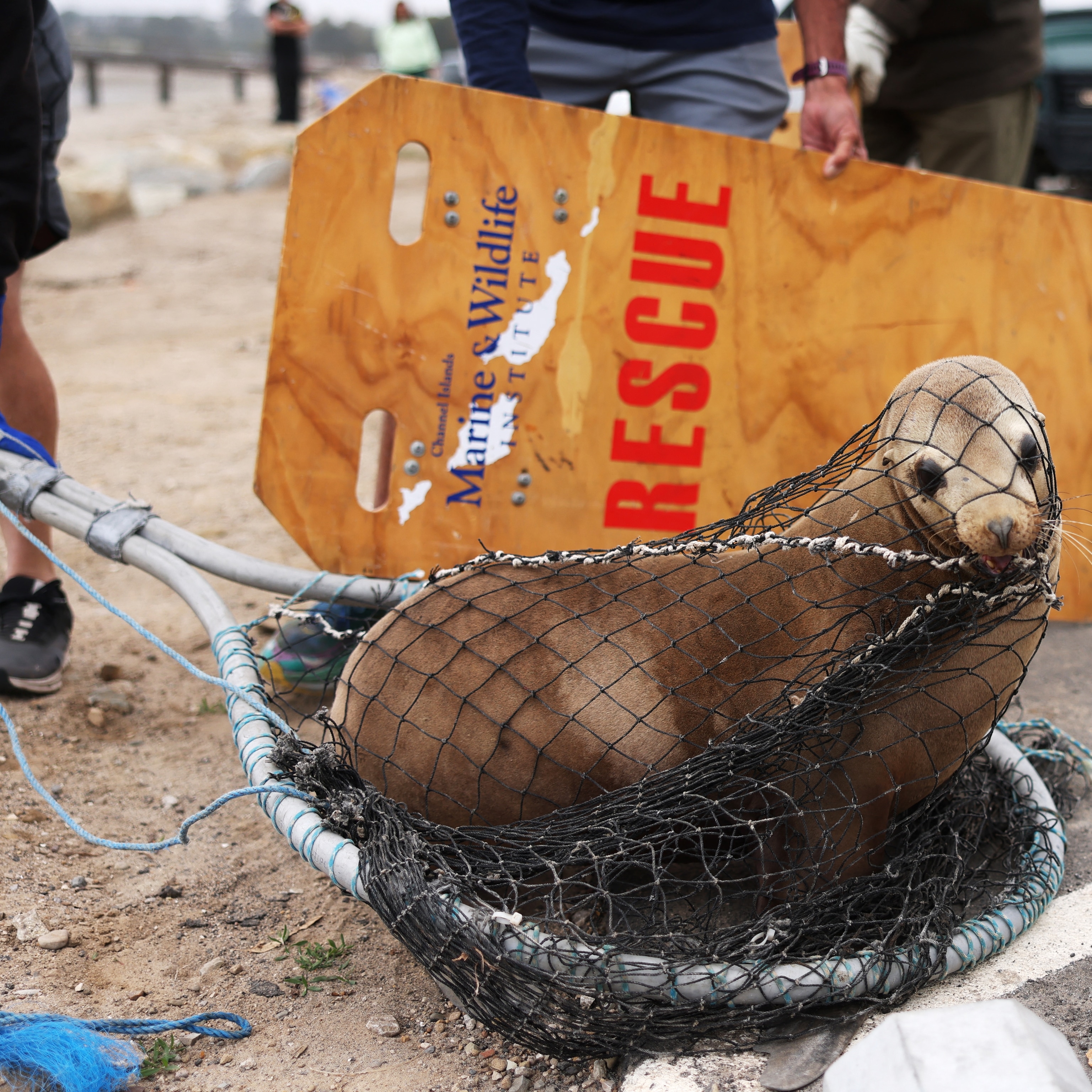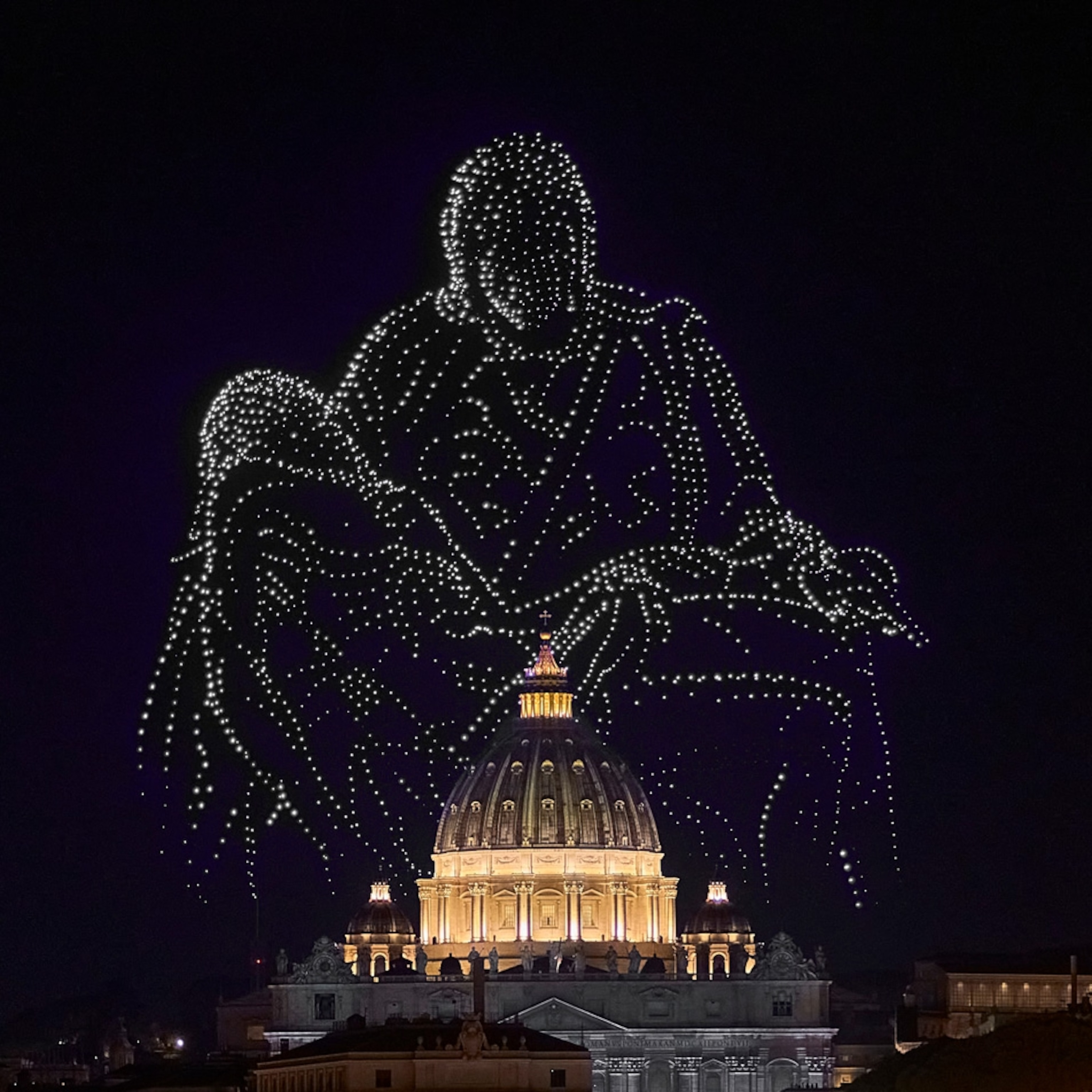
In the Empty Arctic, How to Get the Job Done? With a Drone.
When the weather is bad and civilization distant, the best way to count sea lions—or survey fires or oil spills—may be an unmanned aircraft.
It's hard to say what the 2,000-pound bull Steller sea lion hauled out on a rocky shore in the far western Aleutians thought about the strange object hovering 150 feet above him. An odd bird? The world's largest mosquito? Whatever it was, he paid it no mind—and that's just what the people who were piloting the small drone, an APH-22 hexacopter, had hoped for.
When the researchers survey sea lions the usual way, from a plane belonging to the National Oceanic and Atmospheric Administration (NOAA), the animals often get spooked. Sometimes an adult sea lion, rushing into the water, will crush a pup that happens to be in the way.
But the little drone, nicknamed "Stella," not only didn’t scare the sea lions, it was able to fly in low clouds and fog that grounded the NOAA plane. During the 2014 summer season, it surveyed nearly 1,600 Steller sea lions, giving NOAA its most thorough survey of the endangered population since the 1970s.
"It was even able to detect body condition and branded animals," Erin Moreland of the NOAA Marine Mammal Lab explained to a crowded conference in Fairbanks last fall on unmanned aerial vehicles (UAVs), as engineers prefer to call drones. Using a much larger ScanEagle UAV equipped with thermal imaging cameras, Moreland’s team also surveyed ice seals in the Bering Sea. The drone got resolution of less than an inch while flying at a thousand feet.
As climate change radically alters the Arctic environment, Moreland said, "so many animals are being proposed for listing [as endangered species], it's very hard to keep up with population surveys." Drones may be part of the answer.
Fighting Fires
The void that drones could fill in the Arctic—an extremely remote region with little infrastructure and some of the worst weather in the world—extends well beyond wildlife surveys. (Read more about the push to develop the Arctic.)
In Alaska, drones are being tested for use in fighting wildfires, in responding to oil spills, in search-and-rescue operations, and as temporary communication hubs along the Arctic coast, where even satellite phones have trouble picking up signals.
In 2014 University of Alaska Fairbanks researchers flew a drone into the 200,000-acre Funny River Fire on the Kenai Peninsula. Smoke from the blaze had grounded local flight crews. The drone flew the perimeter, mapping and photographing hotspots, to which fire commanders then dispatched firefighters.
"The firefighters really liked it," says Marty Rogers, the director of UAF's Alaska Center for Unmanned Aircraft Systems Integration. "It was extremely accurate and they could actually see pictures of the terrain."

Thirty miles north of Fairbanks at UAF's Poker Flat Research Range, scientists tested another UAV last year on the ultimate Arctic environmental disaster—an oil spill in ice-covered waters. Researchers spilled oil into a man-made basin, 300 square feet by three feet deep and dotted with miniature icebergs. They sprayed the mini-spill with a small amount of herding chemical to thicken the oil, then ignited it—an appealing option for oil companies when conditions make it impossible to collect the oil.
When a crew of five in a helicopter ignited the spill, they got great results. But the small UAV stole the show. "With the UAV we ignited a marine flare, flew it over the spill and boom! In situ burn," says Jessica Garron of the University of Alaska. The appeal of the drone is safety, she says: “If you lose a UAV in the ocean, it's not good. But it's a lot better than losing five guys in the ice."
Where’s Oscar?
That's the exact scenario the U.S. Coast Guard imagined last summer when it simulated a search and rescue operation 20 miles off Prudhoe Bay. The Coast Guard cutter Healy, one of the nation's two operational icebreakers, dropped a six-man life raft in the pack ice of the Beaufort Sea.
Strapped into the raft was a "thermal Oscar," a human-size dummy in a life jacket with a head wired to give off the same heat signal as a human. A team based at the old Defense Early Warning station at Oliktok Point then launched a ScanEagle drone to try to find the Oscar, along with a smaller, battery powered Puma launched from the ship.
Both drones found the Oscar—but only after operators on the Healy steered them to the target.
"They didn't do a particularly great job at finding one hot head in a sea of ice and shadows," says Rich Hansen of the Coast Guard. "What that told us was we need better sensors and search patterns." But Hansen still believes UAVs have a lot of potential for search and rescue in a region where communities are far apart, manned aircraft are often unavailable, and ship traffic is projected to rise.
Counting Bowheads

One evening last September, as the Arctic sun sank into the Beaufort Sea near Barrow, I watched as another ScanEagle came scudding over the ocean with a faint metallic buzz and was snagged by its two-story tether. Navy contractors hustled over to collect the plane. Robyn Angliss and Megan Ferguson, two whale researchers from the Marine Mammal Lab in Seattle, went along to remove two digital cameras.
Over the next year they’ll pore over tens of thousands of photographs to see if the drone might help with the annual whale surveys off Barrow—in which human spotters in an airplane attempt to count gray bowheads in a gray sea the size of Minnesota. (Thermal imaging, which Moreland used to detect ice seals, would be useless with bowheads; they’re so well insulated that their skin is the same temperature as the sea around them.)
Ferguson dreams of one day coupling an aerial drone with an underwater glider to get far better counts of Arctic whales. Marty Roberts of UAF has a longer drone wish list: flying along pipelines to "sniff" for spills, scouting ahead of ships for icebergs, surveying the ecology of remote coastlines to track the rapid changes that are now underway.
"This is the future, whether you believe it or not," he says. "It's like GPS used to be only for the military and now it's ubiquitous. Drones will be part of everyday life."
Editor's Note: An earlier version of this story said that in 2014, "wildfires scorched an area in Alaska larger than the state of Massachusetts." Fires on that scale actually happened in 2015, not 2014.







